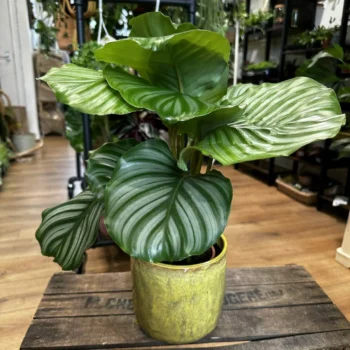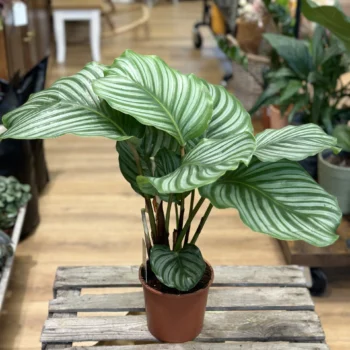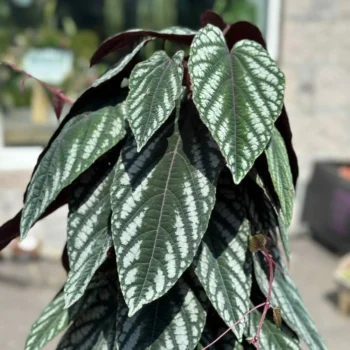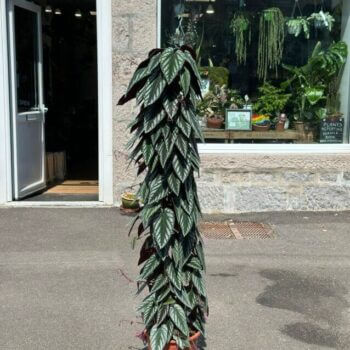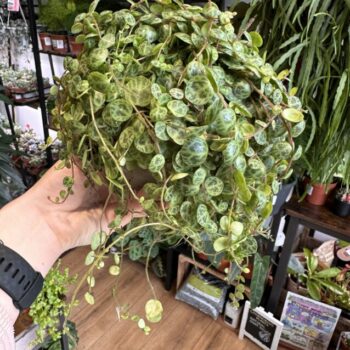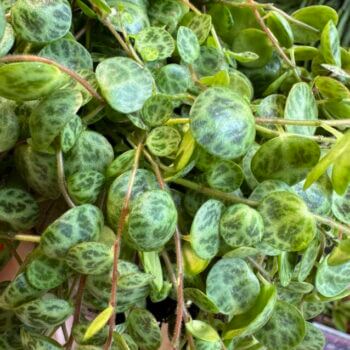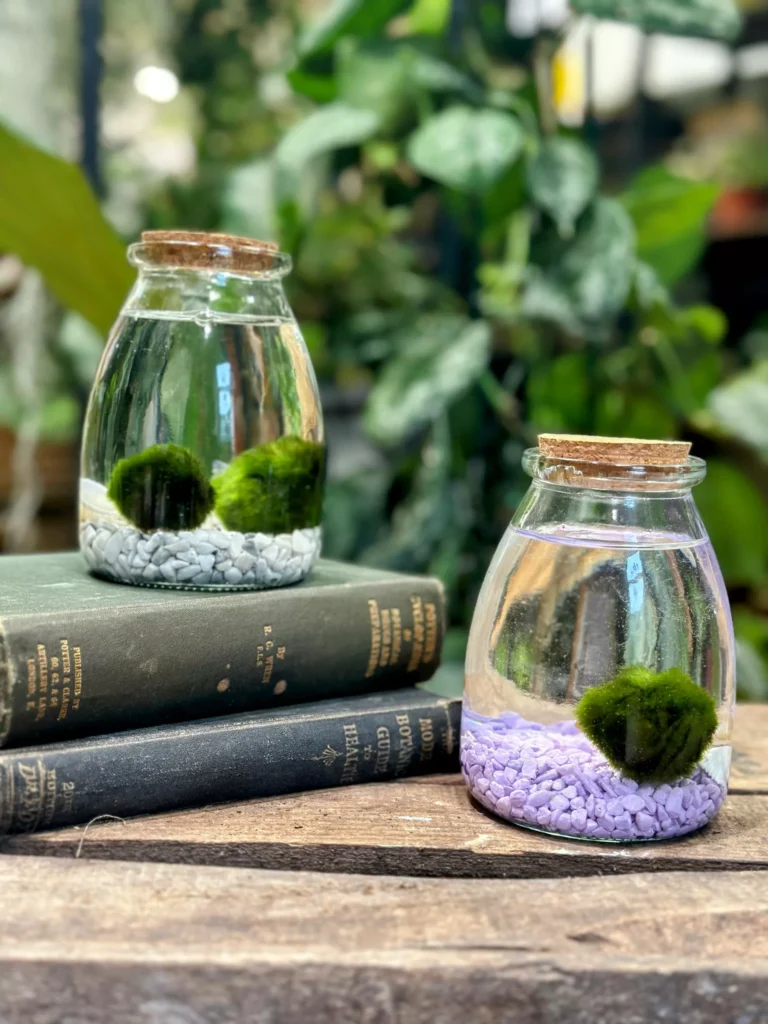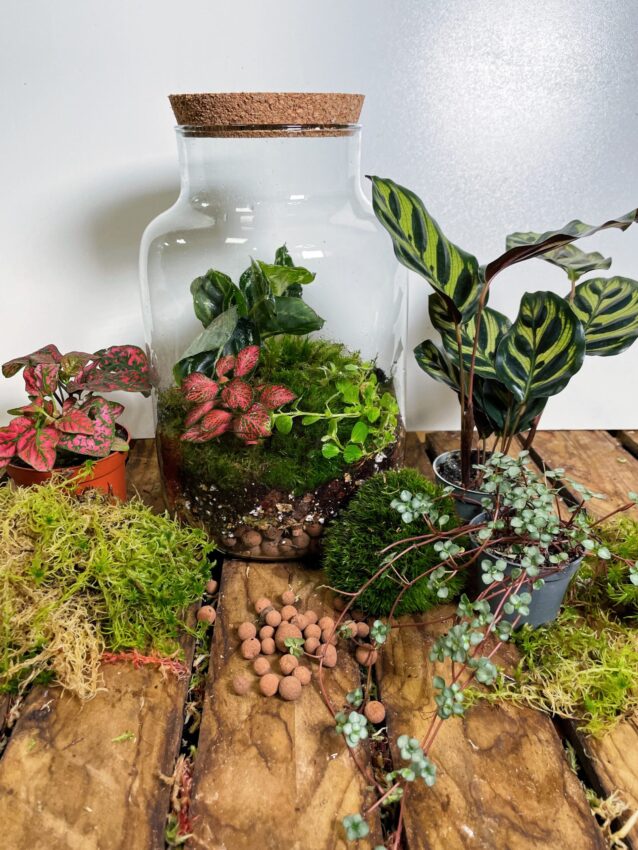10 pet friendly house plants to brighten up your home

Welcome to our delightful green space where we celebrate the harmony of pets and house plants! As a plant shop, we understand the desire to create a welcoming and vibrant environment in your home by filling it with wonderful house plants. If like us, you have pets running around your home then you should know many common house plants are not suitable for your furry friends. Certain house plants, when ingested can be toxic and even the most well-behaved may eventually take a bite out of these plants.
Have no fear, if you’re an enthusiastic plant parent looking to add some greenery to your living space without compromising your pet’s safety, you’ve come to the right place. In this blog post, we present a curated list of ten pet-friendly house plants that will not only brighten up your home but also ensure worry-free cohabitation with your beloved four-legged companions. All plants mentioned can be found in the pet-friendly section of our website as well as in-store on Constitution Steet in Aberdeen. Let’s dive into a world of lush foliage and pet-approved bliss!
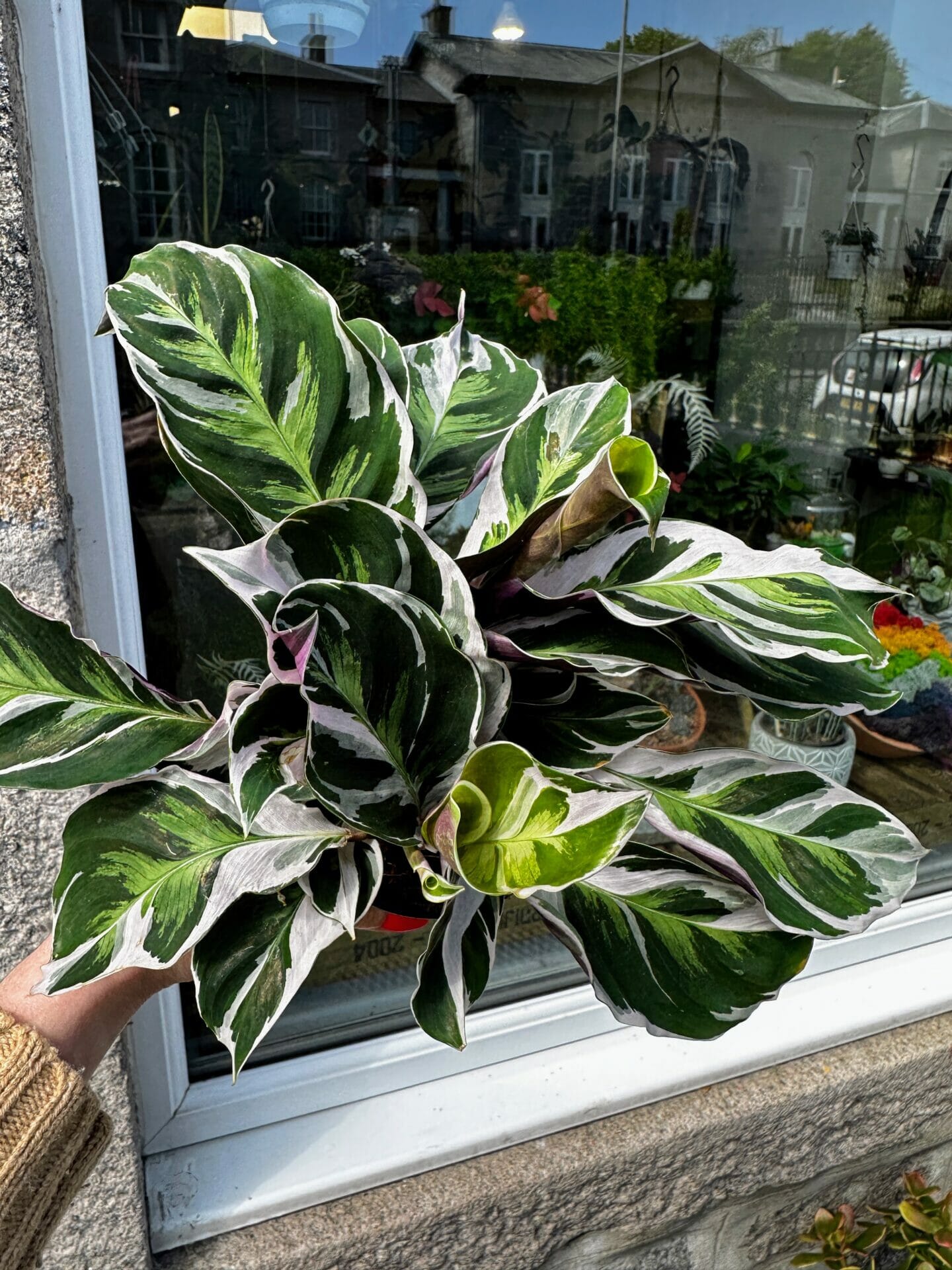
Calathea White Fusion
Calathea White Fusion, an enchanting member of the Marantaceae family, is a mesmerizing house plant that captivates with its strikingly beautiful foliage. Renowned for its unique blend of colours and intricate patterns, this tropical stunner showcases lush, variegated leaves that display shades of green, creamy white, and soft pink within each leaf. The edges are elegantly lined with a deep forest green hue, accentuating the plant’s graceful contours.
With its broad, paddle-shaped leaves, the Calathea White Fusion emanates an air of elegance and sophistication, making it a delightful addition to any indoor plant collection. It is a rare beauty that is a bit of a slow grower but will be a stunning addition to any family home. Calathea is one of the most common and well-loved house plants that are pet friendly.
Calatheas, like most houseplants, will perform best in areas with an abundance of bright indirect light. These plants would typically be found amongst dense vegetation on the forest floor where the light levels can be quite low. Calatheas are well adapted to be placed in low-light areas as houseplants, while they will still need some light to be able to photosynthesise, they can tolerate shady areas much better than most houseplants. These house plants can make for the perfect bathroom plant as they thrive in high humidity.
Always water from the base of the plant. Sitting your plant in an under tray and allowing it to absorb water from the base will reduce the risk of overwatering and is a good preventative measure for fungus gnats.
Our full Calathea care guide can be found on our website here.
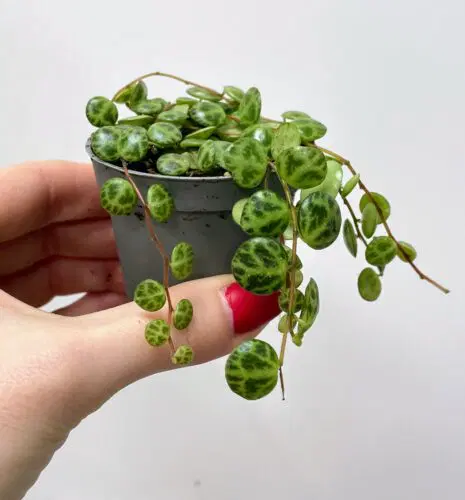
Peperomia Prostata String Of Turtles
The Peperomia Prostata, commonly known as String of Turtles, is a charming and unique succulent plant that belongs to the Peperomia family.
The leaves of Peperomia prostrata are the highlight of this plant, resembling tiny turtles’ shells. Each leaf is a mix of rich green shades, adorned with intricate patterns of silver or cream-coloured veins, creating a striking resemblance to the markings on a turtle’s back.
The leaves are succulent and semi-succulent, giving them a plump appearance and contributing to the plant’s water-storing abilities.
Peperomia Prostata is not only aesthetically pleasing but also highly versatile. It is ideal for a variety of environments, including terrariums and small spaces, making it perfect for any plant lover. Its compact size and slow growth make it a great option for those who prefer low-maintenance plants.
The String of Turtles is also highly resilient and can thrive in both bright and low light conditions.
The Peperomia Care Guide can be found here.
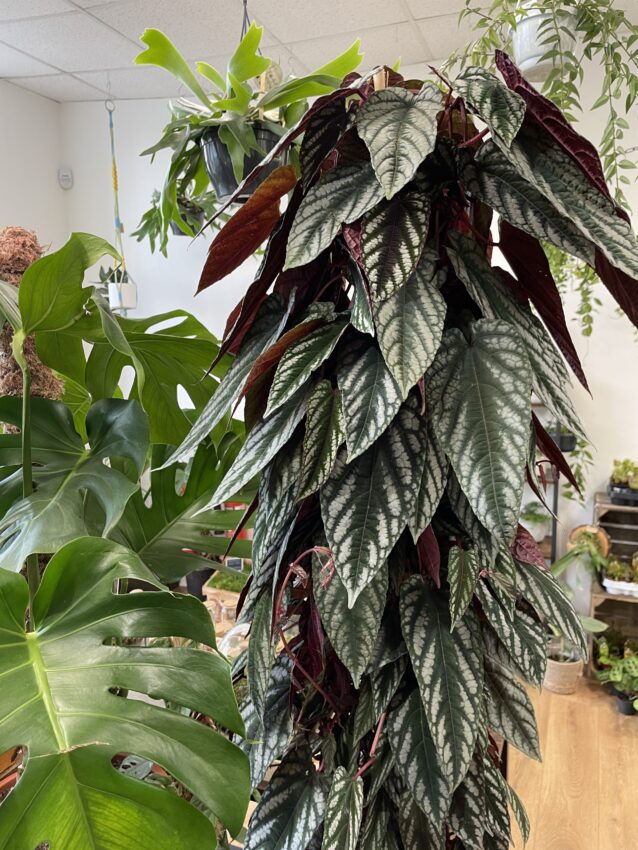
Cissus Discolor Vine Begonia
Cissus discolour, also known as Rex Begonia Vine or the Painted Grape Ivy is a remarkable and visually striking plant that belongs to the Vitaceae family. Hailing from the tropical rainforests of Southeast Asia, this vining beauty enchants with its variegated foliage, showcasing a splendid blend of colours and patterns.
Cissus discolour, also called begonia rex vine or red vine plant is a must-have for any plant lover! This gorgeous vine plant grows nice and tall when you let it climb up a pole or looks great in a hanging basket. The heart-shaped leaves are dark green with purple and silver colours.
As a vining plant, Cissus discolour gracefully trails and climbs, making it an ideal candidate for hanging baskets, trellises, or even as a delightful climber along indoor supports. Its natural propensity to cascade gently adds a touch of liveliness and movement to any indoor space.
Almost all Begonias will need bright indirect light. This will be essential to keeping those beautiful vivid colours. Where some species will tolerate a small amount of direct morning light others couldn’t imagine anything worse. Understanding where your choice of Begonia sits on the scale will help you to provide the perfect spot.
The Begonia can be a temperamental plant to care for, so we recommend this plant for intermediate and expert plant owners.
The full care guide can be found here
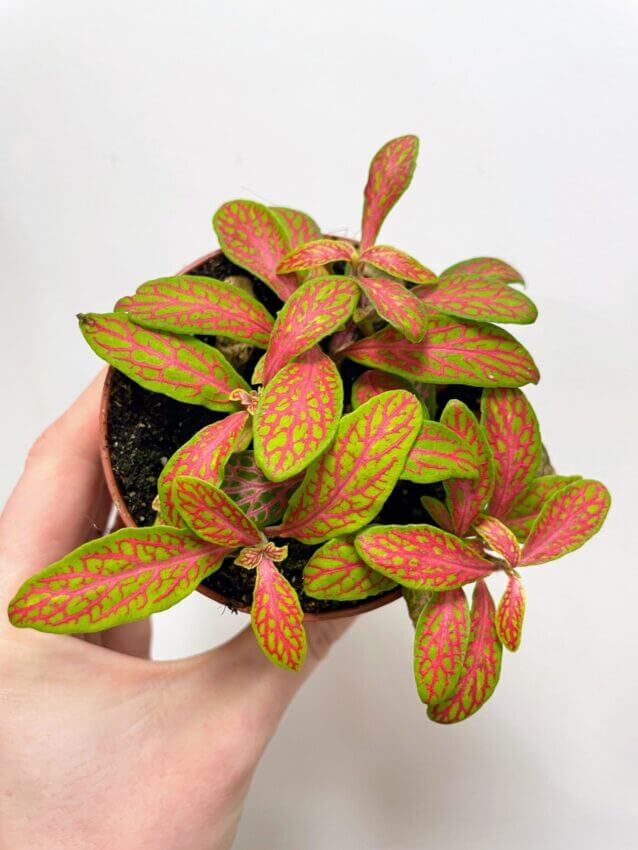
Fittonia Nerve Plant Mosiac Orange Skeleton
The Fittonia Nerve Plant Mosaic Orange Skeleton is a true house plant wonder, captivating hearts with its intricate and vibrant display of colours. This miniature marvel belongs to the Acanthaceae family and is often referred to as the “nerve plant” due to its striking veined foliage. However, the Mosaic Orange Skeleton variety takes its allure to a whole new level, boasting a dazzling mosaic-like pattern that looks like a work of art.
The leaves of the Fittonia Nerve Plant Mosaic Orange Skeleton feature a mesmerizing combination of orange hues blended with delicate shades of green, creating a harmonious contrast that is captivating.
This petite plant exudes a sense of delicate elegance and is perfect for adding a pop of colour and life to small spaces. Whether displayed on a tabletop, shelf, or as part of a terrarium arrangement, the Mosaic Orange Skeleton Fittonia effortlessly commands attention with its radiant beauty.
Fittonia is low-maintenance and prefers indirect sunlight and a high-humidity environment. Regular watering is necessary, leaves will get floppy as soon as the soil will stay too dry for a longer time. Fittonia is also known for its air-purifying qualities, and it helps to remove toxins and pollutants from the air, making it an excellent choice for those who are looking to create a healthy indoor environment at home or the workplace.
Our full Fittonia Care Guide can be found here.
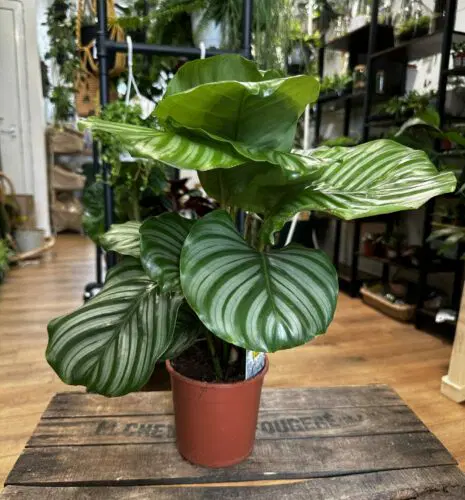
Calathea Orbifolia Prayer Plant
Calathea Orbifolia, sometimes called the Prayer plant due to the movement of leaves up and down is a beautiful plant with green striped leaves. Its unique pattern will catch the eye and make a statement in any room.
Like the white fusion, Calathea Orbifolia will perform best in areas with an abundance of bright indirect light. These plants would typically be found amongst dense vegetation on the forest floor where the light levels can be quite low. Calatheas are well adapted to be placed in low-light areas as houseplants, while they will still need some light to be able to photosynthesise, they can tolerate shady areas much better than most houseplants. These house plants make for the perfect bathroom plant as they thrive in high humidity.
This is another great pet-friendly house plant that can really brighten up your home with some incredible vivid greenery.
The full care guide for Calathea can be found here.
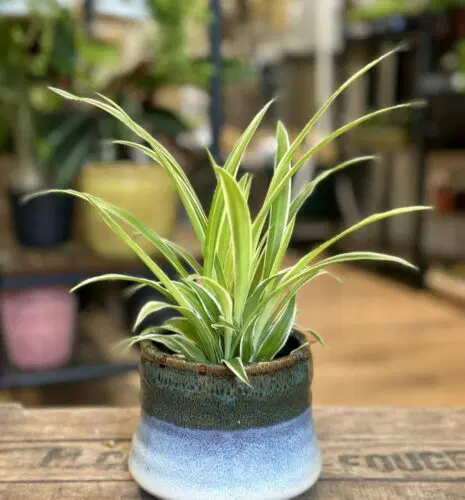
Chlorophythum Vittatum Spider Plant
Chlorophytum, commonly known as the Spider Plant or Airplane Plant, is a beloved and iconic houseplant cherished for its graceful arching leaves and air-purifying properties. Native to South Africa, this hardy and low-maintenance plant has become a favourite among indoor gardeners.
The leaves are typically green with a central white stripe, creating a striking contrast that adds a touch of elegance to any space. As the plant matures, it produces baby plantlets, or “spiderettes,” on long, arching stems, which can be easily propagated to expand your plant collection or share with friends.
The plant improves air quality by removing pollutants and increasing oxygen levels. It’s a low-maintenance plant that thrives in bright, indirect light and can tolerate occasional periods of low light.
This house plant is a great addition to any home as it is pet friendly and easy to care for!
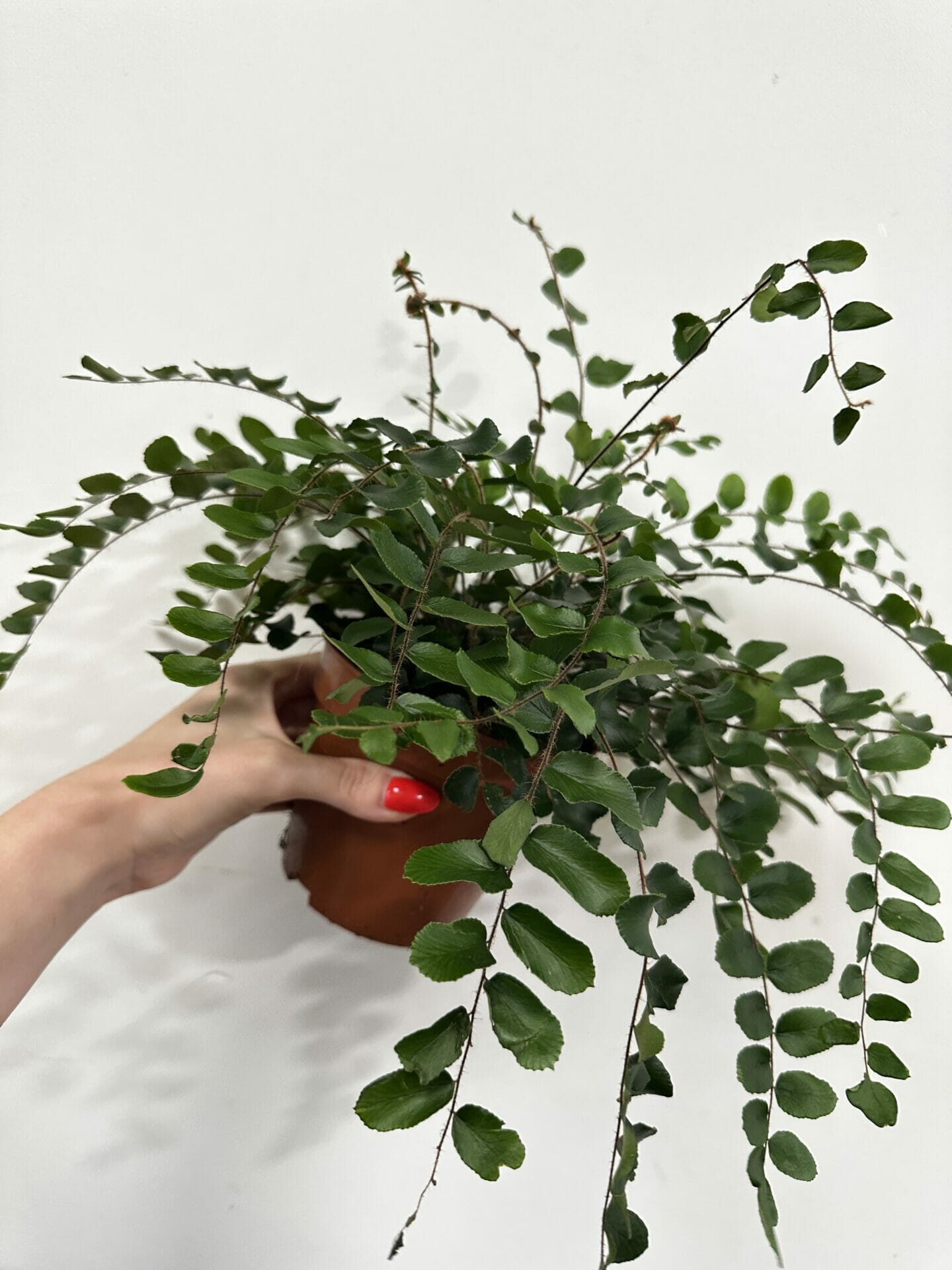
Pellaea Rotundifolia Button Fern
Pellaea rotundifolia, commonly known as the Button Fern or Round-leaved Fern, is a delightful and compact fern that belongs to the family Pteridaceae. Native to New Zealand and parts of Australia, this fern has captured the hearts of plant enthusiasts with its eye-catching foliage, and pet friendliness.
This species is particularly well-suited for kokedama, a traditional Japanese planting technique that involves wrapping the plant’s roots in moss balls. It can also be placed in an open or closed terrarium to create a miniature garden inside your home.
In terms of benefits, the Fern is a great air-purifying plant and can help to improve the air quality in your home. It’s also a non-toxic plant, so it’s safe to have around pets and children.
These houseplants can prove challenging to really make thrive and grow to their full potential. They need to be nurtured and watched with an attentive eye. At least once you’ve learnt to take care of one Fern you should have your bases covered for any different species in the future. Most Ferns are pretty similar when it comes to their care and often the same rules apply across many different species.
Our Fern Care Guide can be found here.
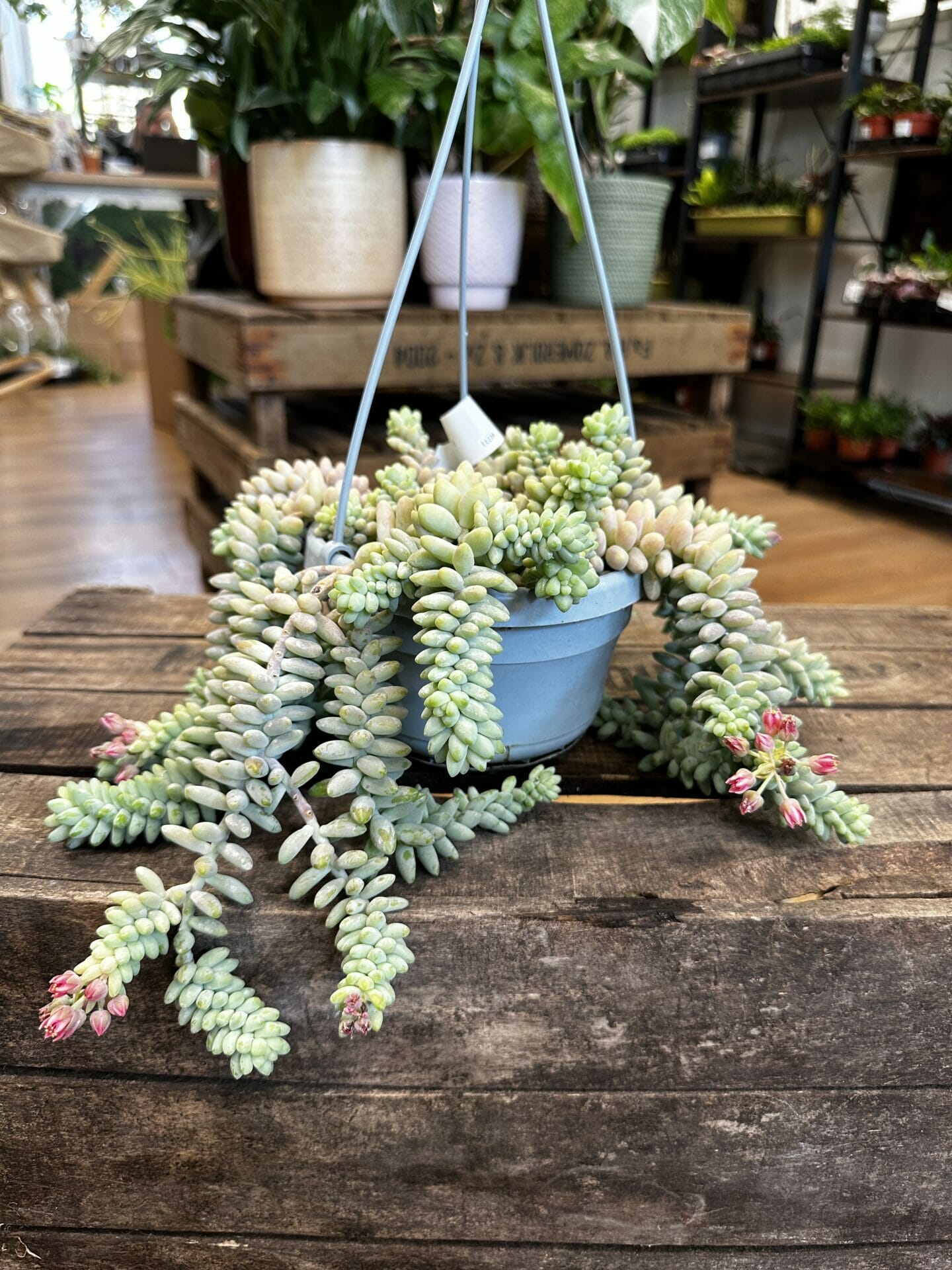
Burros Tail Sedum Burrito
The Burro’s Tail, scientifically known as Sedum morganianum, is a captivating and unique succulent that belongs to the Crassulaceae family. Native to Mexico, this plant is popular for its trailing growth habit and distinctive, plump, and fleshy leaves.
The leaves of the Burro’s Tail are the highlight of this plant. They are cylindrical and bead-like, resembling tiny green beans or tails, which led to their common names “Burro’s Tail” and “Donkey’s Tail.” The leaves are a lush green colour and have a waxy texture that aids in water retention, making this succulent well-suited for arid conditions.
This plant’s trailing stems can grow quite long, making it an excellent choice for hanging baskets or as a cascading accent in a container garden. The Burro’s Tail thrives in bright, indirect light and prefers well-draining soil to prevent root rot. As a succulent, it has low water requirements and prefers to dry out between waterings.
The Sedum Burro’s Tail is a great choice for those looking to add a touch of natural beauty to their home or workplace.
This succulent is also pet-friendly, making it a great choice for households with pets as it is non-toxic and poses no harm to curious pets that may nibble on the leaves or brush up against the plant.
The full care guide for the Burros Tail can be found here
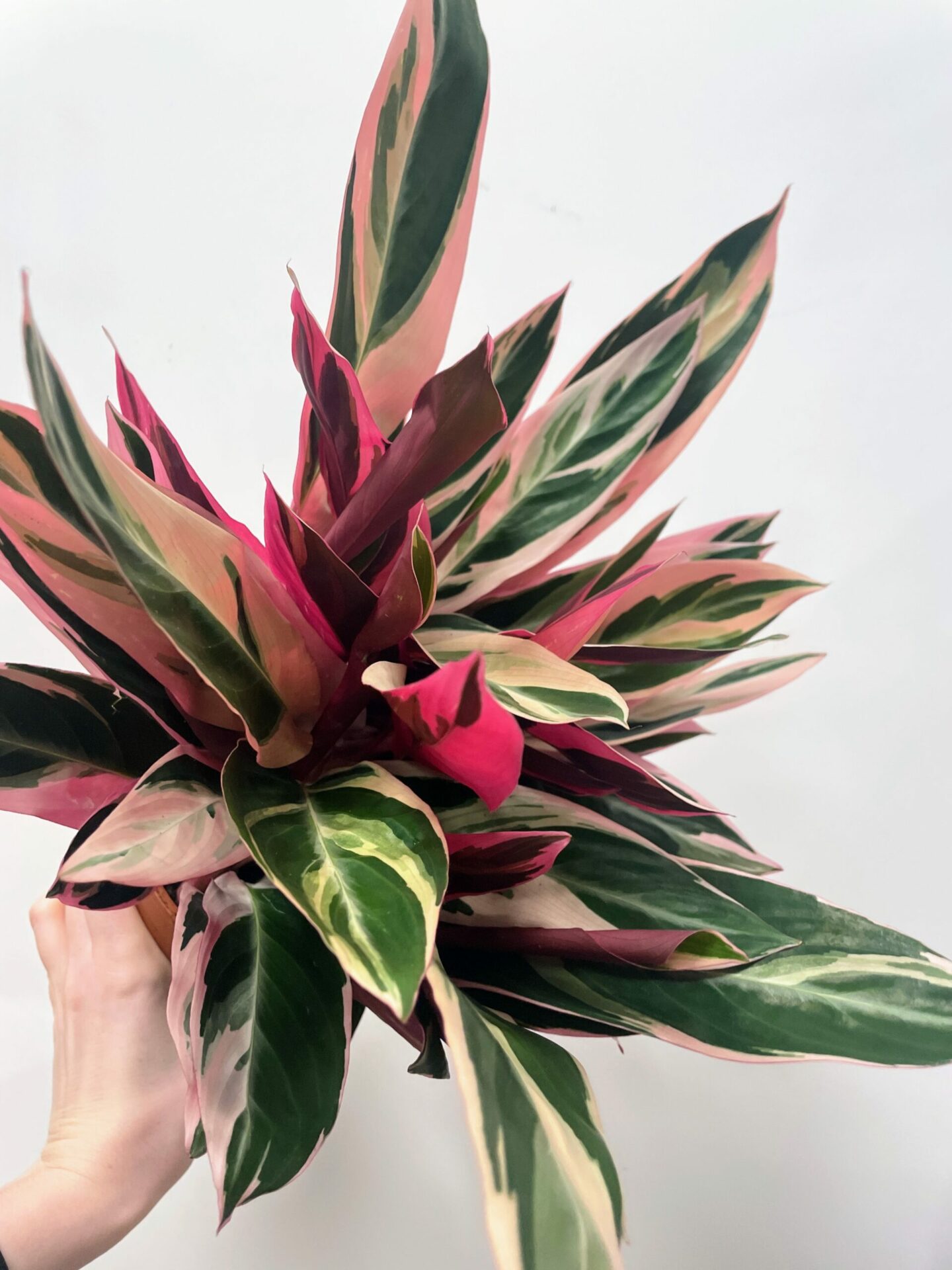
Calathea Triostart Stromanthe Prayer Plant
Calathea Triostar is a beautiful plant with pink and beige striped variegated leaves that can add a touch of vibrant colour to any indoor space. Its unique pattern will catch the eye and make a statement in any room.
This is the third Calatheas on this list because they are such diverse and versatile houseplants! They are fantastic pet-friendly plants that have eye-catching vivid colours that will instantly brighten up your home.
This plant thrives in moderate to bright indirect light and prefers consistently moist soil during hot months and you can let the soil dries out between waterings in winter. It is also essential to maintain a humid environment through regular misting or placing a humidifier nearby, as the plant is native to tropical regions. Avoid overwatering and make sure to use good quality growing medium created for calathea plants when repotting.
With proper care, Calathea can continue to thrive and add bring colour to your indoor space. Its low-maintenance nature and air-purifying abilities make it a perfect choice for plant enthusiasts of all skill levels.
The full care guide for Calathea can be found here.

Pachira Aquatica Money Tree
Pachira aquatica is a beautiful tropical wetland tree commonly known as the guinea nut, Guiana chestnut, provision tree, French peanut, Malabar chestnut, Mexican fortune tree, water chestnut, dollar plant or saba nut.
This easy-growing plant is native to South America where can reach 20m tall and produces edible nuts. Despite living in a tropical, dump environment the plant doesn’t need more water than your other houseplants. You should water when half the soil dries out and keeps in a bright spot.
According to the Chinese art of Feng Shui, Pachira aquatic also called the money tree is considered to bring prosperity – good fortune to a household and all people who live there. Five-lobed leaves are also considered a symbol of luck.
That concludes our list of 10 pet-friendly house plants that are available from Highland Moss. If you are looking to brighten up your home with some amazing pet-friendly houseplants, then please check them out on the website or visit our store on Constitution Street in Aberdeen!
All the products listed can be found below:
Visit Our Store on Constitution Street:
Plant Hospital:
At Highland Moss we know taking care of house plants can be very tricky, from brown leaves to slowed growth, sometimes it’s not clear what your plant needs to continue to thrive. That’s why we have created the Highland Moss Plant Hospital! The Plant Hospital is a free service we offer where you can send in photos of your poorly plants, we will diagnose the issue and offer a solution. All we ask for in return is that we can use the images you provided for our hospital page so that others can benefit from the same tips.
Using the plant hospital is very straightforward, to admit your patient, please click the following here to our admission form and we aim to get back to you within 5 days. Alternatively, you can message us directly on Instagram @Highlandmoss with the photos and a brief description of your issue.
If you require an answer quickly, why don’t you try our new helpful Ai assistant MossBot. MossBot is here to provide you with guidance for your plant problems. It is always learning but has proven to make great suggestions. Speak to MossBot naturally but try to give clear, accurate information to get the best results.


